This was published 6 years ago
The world's most underrated and overrated food and wine experiences
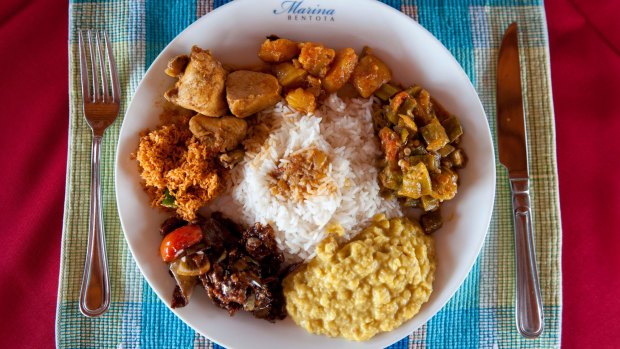
Sri Lanka is home to a cuisine that is seriously, spectacularly good.Credit: imageBROKER / Alamy Stock Photo
Some dining experiences and national cuisines deserve more credit from foodies. Conversely, from single origin coffee to 'natural' wine, there are some that are vastly overrated. Our writers name their favourite underrated food experiences along with those that it's time to move on from.
Underrated: The things you got to try
ENGLISH WINE
Who knew the same seam of chalk found in the Champagne region of France pops up again in southern England? As a result, parts of Sussex and Kent have an almost identical topography and geology. The region also has a similar climate, so in theory, at least, it should be capable of producing "English champagne".
The owners of Ridgeview Estate, a vineyard at the foot of the rolling Sussex Downs, spent the last 25 years turning that dream into reality. In the process they produced the first wine outside of the Champagne region to win the coveted Best Sparkling trophy in the Decanter World Wine Awards.
They're not the only ones. Hush Heath Estate in Kent released its first vintage of Balfour Brut Rose in 2004. Four years later it won a gold medal at the International Wine Challenge.
Thanks to pioneers like these, English wine is enjoying a glorious renaissance. The country now has more than 500 wineries and produces everything from roses to reds to late harvest stickies. The majority are clustered in Sussex and Kent, creating the intriguing possibility of an English wine tour. See englishwineproducers.co.uk RM
AMERICAN BRUNCH
In the United States, weekend brunch is often a freewheeling, lose-track-of-time affair that involves copious amounts of food and cocktails. Sunday brunch at Memphis' the Beauty Shop (a midtown restaurant that was once Priscilla Presley's hair salon) might kick off with a bad boy bloody Mary with pickled okra. Add a beneduck (eggs Benedict with sugar-spiced duck and hot pepper jelly), a side of the New York Times and a sweet finish with pecan waffles, thankyaverymuch. See thebeautyshoprestaurant.com KL
See also: The best brunch to be had in New York City
MONTREAL FOOD SCENE
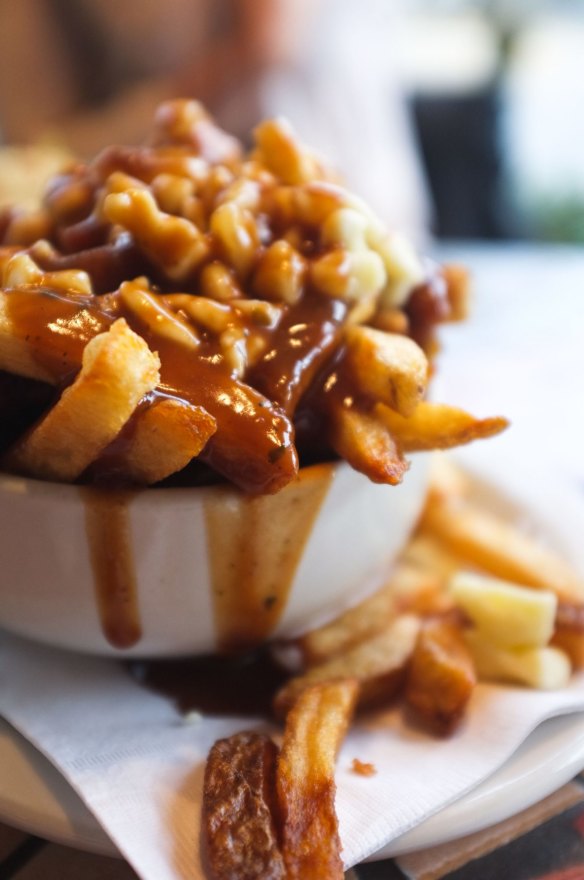
Credit: Alamy
Well, of course Montreal has great food; what else would you expect from a former French colony? But the sheer diversity of Montreal's fabulous food experiences is remarkable. There are tempting fresh food markets such as Marche Jean-Talon, must-boo restaurants such as Toque! and Au Pied de Cochon, and endless chic little bistros. The city's signature foodie experiences, however, are quick bites: the wonderfully airy bagels and that ultimate comfort food, poutine: chips topped with cheese curds and gravy. See mtl.org/en UJ
GREEK WINE
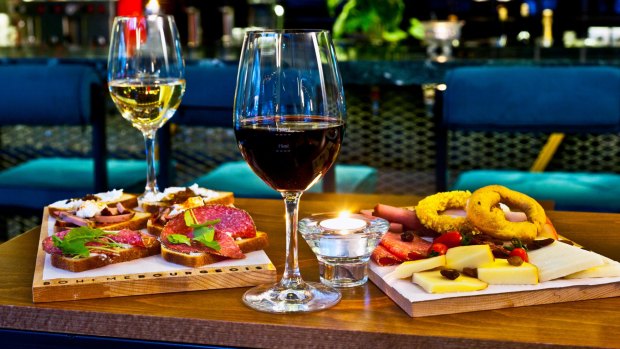
Credit: Alamy
Forget retsina: Greece's boutique wineries are now showcasing an astounding array of indigenous varietals that you have never heard of, from aromatic whites such as malagousia to velvety reds such as agiorgitiko. They are grown everywhere from Macedonia to the Peloponnese, not to mention many of the islands, but the easiest way to sample them is in one of Athens' friendly wine bars. Best of all are the prices, which are surprisingly low. UJ
HOTEL RESTAURANTS
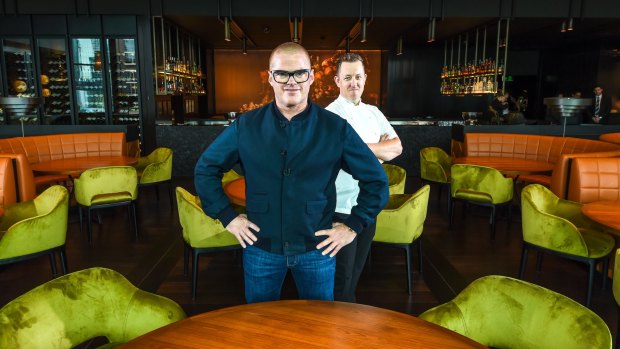
Credit: Justin McManus
It used to be that you'd only eat at the restaurant at your hotel out of desperation, when convenience trumps notions of authentic local cuisine or genuinely tasty food. However, things have changed. Many hotel restaurants these days are attractions in their own right – take The Bentley at Sydney's Radisson Blu, or Dinner by Heston at the Crown Melbourne, or a whole swag of overseas establishments that are upping the ante. BG
SWISS WINE
Who knew the Swiss even made wine? Less than 2 per cent of it actually leaves the country (and most of that goes straight to Germany). But in Switzerland you'll discover wine varieties rarely seen outside the country, grown in some of the world's oldest wine regions (like World-Heritage-listed Lavaux, just outside Geneva). What's more, it's often cheaper than beer. See swisswine.ch/en CT
SRI LANKAN CUISINE
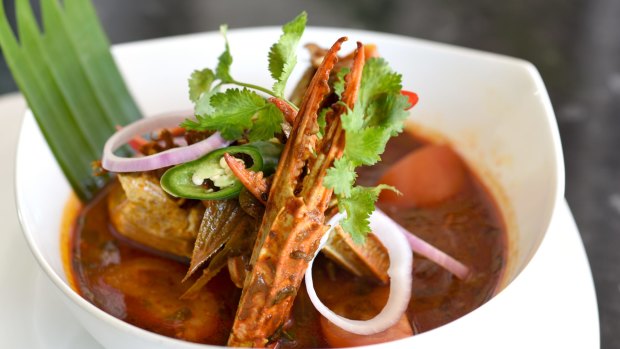
Credit: Steven Siewert
It's no wonder Sri Lankan cuisine is underrated: even Sri Lankans themselves seem surprised that anyone would travel to their country just for the food. However, this island nation is home to a cuisine that is seriously, spectacularly good. From the crab curries (pictured above) and turmeric-infused dhosas of Jaffna, to the highly-spiced snack and street foods of Colombo, to the down-home rice-and-curry joints you find across the entire country, Sri Lankan food is uniformly fresh, spicy, affordable and delicious. BG
HO CHI MINH CITY, VIETNAM
Though it's largely missing the colonial architecture of Hanoi, and the small-town charm of Hoi An, the welcome is extremely warm in Ho Chi Minh City, Vietnam's southern capital, and the dining and drinking scene is unbeatable. Come here to eat bun rieu, the crab-based noodle soup; to drink beer and eat "oc", the local sea snails, at a street-side stall; to feast on banh mi, the famous pork rolls; to drink sweetened iced coffee on hot days. This is Vietnamese living.
LOGRONO, SPAIN
Arrive hungry, because on a night out in this charming little town, tucked away in Spain's Rioja wine region, you're going to want to eat, and you're going to want to eat everything. What Logrono lacks in recognisable sights it more than makes up for with its embarrassment of Basque-style pintxos bars, purveyors of fine food who are taking it to their more famous rivals in coastal San Sebastian just down the road.
JAPANESE PICKLES
There's no shortage of amazing food in Japan; however, pay particular attention to the pickled vegetables – the likes of daikon radishes, cucumbers, eggplants and more that are treated with love and respect to conjure up something truly amazing. These "tsukemono" are a vital part of almost every Japanese meal, available in vast quantities from markets and shops across the country, and you'll find yourself craving them once you've left.
KEBABS
For too long these cylindrical sandwiches have been maligned as no more than 3am drunk food; but the truth is that kebabs – which for the purpose of this story refers to the meat-wrapped-in-flat-bread versions we know in Australia – deserve far more praise. In their homelands, in countries such as Turkey and Lebanon, kebabs are genuinely tasty at any time of the day. Good meat, good bread, good salad and pickles: that's all you need.
HONG KONG SPEAKEASIES
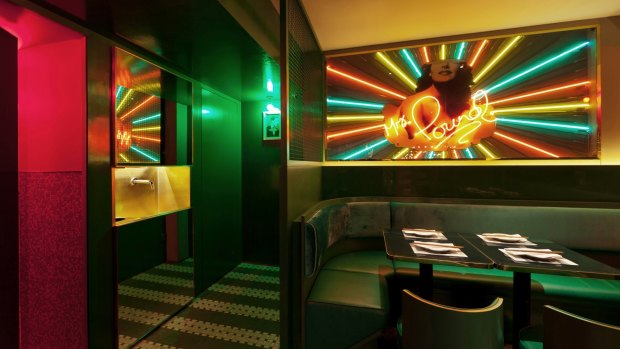
Credit: Hong Kong Tourism Board
Hong Kong is justifiably famous for its skyscraper-topping rooftop bars, but the city also has some seriously cool subterranean speakeasies. Highlights include Dr. Fern's Gin Parlour, a basement gin palace accessed via an Alice in Wonderland-style miniature door; Mrs Pound (pictured above), a kitsch, retro 60s bar hidden inside a stamp merchant; and The Old Man, an intimate Ernest Hemingway-themed bar with a menu featuring many of the writer's favourite tipples. See discoverhongkong.com
UKRAINIAN SPARKLING WINE
It's as good as many of the best sparkling wines from Europe, says Felix Anheier, hotel manager of the Viking Sineus, which sails between Kiev and Odessa, yet few of us have ever sipped it: Shabo, one of Europe's oldest terroirs. The vines were brought to Odessa by the Swiss in the 19th century and are still producing bubbly despite decades of Soviet rule and Mikhail Gorbachev's anti-alcohol campaign.
BUDAPEST'S RUIN BARS
Located in abandoned buildings in the city's Jewish Quarter, these bohemian drinking dens would be cool if they weren't crammed to the rafters with tourists every night. Since becoming an obligatory stop on every hen and stag do night out, they've lost their former kudos and allure. Instead, check out the city's more sophisticated wine bar scene where you'll get a seat, a decent drink and actually be able to hold a conversation.
TACHINOMI, JAPAN
Japan's tachinomi, or "standing bars", are no-frills drinking dens that may look a little intimidating at first, but in fact provide the ideal opportunity to go out on the cheap and meet locals. As the name suggests, there are no chairs or stools in tachinomi, just a few high tables where salarymen can rest beers and eat snacks before taking the train home. Tachinomi are fun and friendly – look out for them in the bigger cities.
ECUADORIAN CUISINE
It seems only those who've visited Ecuador have had the pleasure of sampling its simple yet exceptionally tasty cuisine: locro, a soup made with potatoes, cheese and chunks of fresh avocado; empanadas stuffed with cheese and onion and sprinkled with sugar, steamed corn cakes called humitas, the thick juice of the cherimoya fruit and, inevitably, lashings of heavenly dulce de leche (caramel).
KOREAN CUISINE
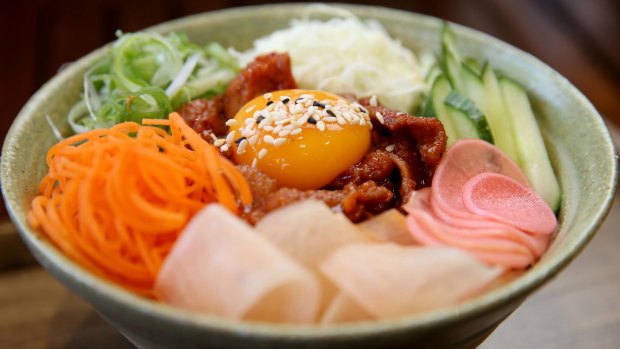
Credit: Patrick Scala
Kimchi is having a moment, but what about bulgogi (strips of marinated and barbecued beef, pork or chicken), bibimbap (rice and vegetable hotpot), samgyeopsal (slabs of grilled pork belly) and – best of all – freshly caught shellfish grilled on a stovetop at one of the simple canteens lining Korea's coast?
CANNED SEAFOOD, SPAIN
Take everything you think you know about canned food and flip it on its head. In Spain, some of the very best seafood ends up in tins. It's marinated in high-quality oil and then sealed, locking in the freshness, allowing flavours to develop over months or years, and creating something amazing. For the very best canned seafood, call in to Espinaler, a bar near Barcelona, and try the "berberechos", or small clams, paired with a glass of vermouth.
PLOV, UZBEKISTAN
Most Central Asian food is nothing to write home about; however, plov, the ubiquitous rice pilaf that originated in Uzbekistan, is genuinely tasty. The dish is cooked in a large wok-like pot over an open fire; meat is fried in oil, before onion and carrots are added, then rice, then water and a head of garlic, and the it boils until the liquid has evaporated. It's then served up with quail eggs and a few slices of sausage.
LEVANTINE FOOD
You may not think you know much about the food of the Levant, the area of the Middle East that takes in the likes of Lebanon, Jordan, Israel, Palestine and Syria. But then consider the dishes: baklava, falafel, hummus, fattoush, kanafeh, baba ganoush, halva, shawarma, tahini, zaatar. This stuff is absolutely delicious, and it forms a huge part of modern Australian dining. In its homeland, it's almost indescribably good.
BROWN CAFES, THE NETHERLANDS
Holland isn't known for good food. Most Dutch cuisine is pretty bland. However, the country's "brown cafes" – the traditional, cosy pubs spread throughout the Netherlands – serve excellent local beers paired with Dutch treats such as bitterballen (meatballs dipped in mustard), local cheeses and sandwiches. These places are often hundreds of years old, the atmosphere is friendly, and the snacks are cheap and tasty. Well worth a go.
Overrated: Once 'hot' now 'not'
HIGH TEAS
Like croquet, traditional English high tea is probably best left to the English. Five-star hotels across Australia have leapt onto the high tea bandwagon with unseemly haste – often with disastrous consequences. On one memorable occasion I was offered a party pie, followed by tea in an aluminium pot. Sacre bleu! But there was worse to come. Instead of fragrant loose-leaf tea, the waiter brought me a tea bag. As all tea-drinkers know, proper tea must be freshly brewed in a china teapot using premium leaves picked by expert hands in the high terraces of Sri Lanka or somewhere equally exotic. While certain modern innovations, such as champagne, are acceptable, most authorities concur that a high tea should consist of an assortment of elegant cakes and delicate sandwiches. And tea served in fine china. Although there are exceptions, the old Windsor Hotel in Melbourne and The Tea Room in Sydney both spring to mind, the typical Australian high tea is too often a dismal affair served buffet-style. After all, High Tea, which dates from the mid-1700s, is not a meal as such but a piece of theatre, as contrived, magical and nonsensical as the cream puffs and slices of gateaux winking at you from the cake stand. See thetearoom.com.au MC
CELLAR-DOOR VISITS
Good on you if your idea of fun is to stand in a shed and listen to a patronising wine expert drone on about leathery undertones and hints of raspberry as you sip a series of awful wines, all the while wondering how you'll get out of buying a bottle. Only a few cellar-door visits are informative and innovative. Best leg it into the vineyards with a picnic, and soak up the scenery. BJ
See also: The world's best drinking destinations
INSTAGRAMMING/PHOTOGRAPHING MEALS
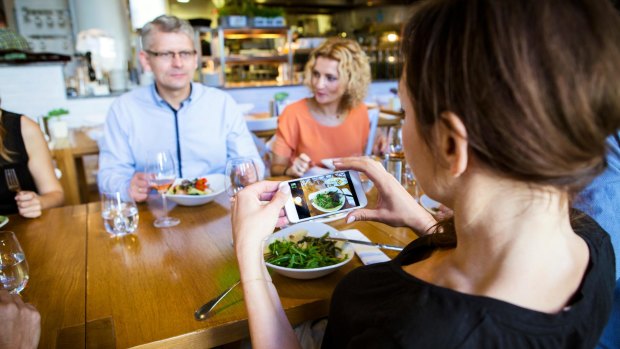
Credit: Alamy
Remember when you could step into a restaurant and the only photographs taken – if anyone thought to pull out a camera or phone at all – was a commemorative snap of your table companions? Instagram has been with us for only seven years but boy how times have changed. Today, restaurants are filled with diners who fancy their photography skills, shooting their food from every angle – after rearranging the cutlery, restyling the table, and asking their friends to hold back from eating because their meals must be documented as well.
Mostly, the results look as appetising as old shoe leather. Spurning filters that could improve the images, these food fanatics post a stream of photos featuring hideous lighting, half-empty plates and used utensils. The more I see these shots, the more I think that food photography is an art best left to professionals.
Some restaurants have had enough, too, encouraging people to snap their pictures more discreetly so they don't annoy other patrons. Sydney's Momofuku Seiobo asks diners to refrain from flash photography altogether while in South Australia's Barossa Valley, The Louise's fine-diner, Appellation, might ask flash-happy diners to make do with the restaurant lighting. See seiobo.momofuku.com and thelouise.com.au KL
THE "SIGNATURE" DISH
How many times have you tried a city or country's "signature dish" and been horribly underwhelmed? The guide book gushes about the merits of a New Orleans' po-boy, but what turns up is nothing more than a soggy meat sandwich. You arrive in Milan and can't wait to sample an authentic Milanese risotto. The verdict? The very definition of blandness. Swiss fondue? Peruvian guinea pig? Swedish pickled herring? The prosecution rests. RM
CRUISE SHIP BUFFETS
This cruiser has one strict rule at sea; never, ever dine at the buffet. The lines are long, the tables are full and diners are continually piling their plates from the troughs. Instead, take advantage of the free a la carte breakfast and lunch offerings at the main restaurant and pay that little extra to dine at the specialty venues in the evening. It's often a fraction of the price of the equivalent on land; the cuisine is superior, and the atmosphere more intimate. AB
DEGUSTATION MEALS
Let's go for the degustation menu. Why? Because it's got eight courses. We never eat eight courses at home. But we're on holiday. And let's get the matching wines. Really? Yes, let's splash out. But I don't like olives. They're only on three of the courses. And I'm allergic to prawns. You can still eat courses two and five. Four hours and $360 later. What did you think? Please don't make me do that again. RM
"NATURAL" WINE, AUSTRALIA
The latest fad sweeping the drinking world – "minimal intervention" wine, made using organically grown grapes and wild yeast, with no sulphites or preservatives and no filtration; coming to a trendy small bar near you – has a touch of the emperor's new clothes about it. The wines are quite often faulty, slightly sour, and smell like a football sock. Please make it stop.'
See also: Travel guide to Australia's best wineries
LOBSTER, EVERYWHERE
Here's the thing about lobster: yes, it has the cachet of a luxury ingredient, and it's always tempting to order it when you're on holidays. However, it's also hideously expensive no matter where you eat it, and it's always mildly disappointing. You'll find yourself wondering if this is really that much better than prawns. And there's no way it's better than a Moreton Bay bug.
MACARONS, FRANCE
The popularity of the macaron is a total head-scratcher: these brightly coloured and overly sweet treats are nowhere near as delicious as a good French pastry, and they pale in comparison to the greatness of, say, a stinky French cheese, or a fresh baguette, or a good bottle of wine. Why does everyone lust after them so?
FOIE GRAS
It's one of the cruellest, most brutal ways of producing a foodstuff ever, and yet so many French-style bistros still offer it as almost a rite of passage. But the result of force-feeding a duck or goose through a feeding tube, making its liver enlarge to about 10 times its normal size, to me, has no place on any civilised menu. And ditto for shark fin soup. And veal.
SINGLE ORIGIN COFFEE
Does a cup of coffee brewed from beans grown in one particular region really taste better than a blend of geographically disparate beans – and would you even be able to taste the difference? Or is our desperate need to be on-trend being cleverly exploited by baristas?
See also: The best country in the world for food
Sign up for the Traveller Deals newsletter
Get exclusive travel deals delivered straight to your inbox. Sign up now.